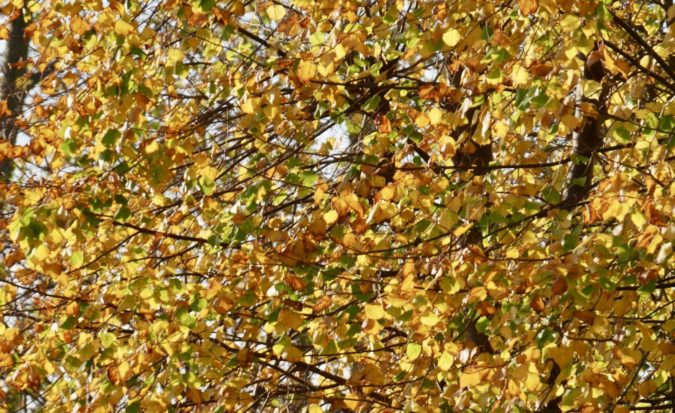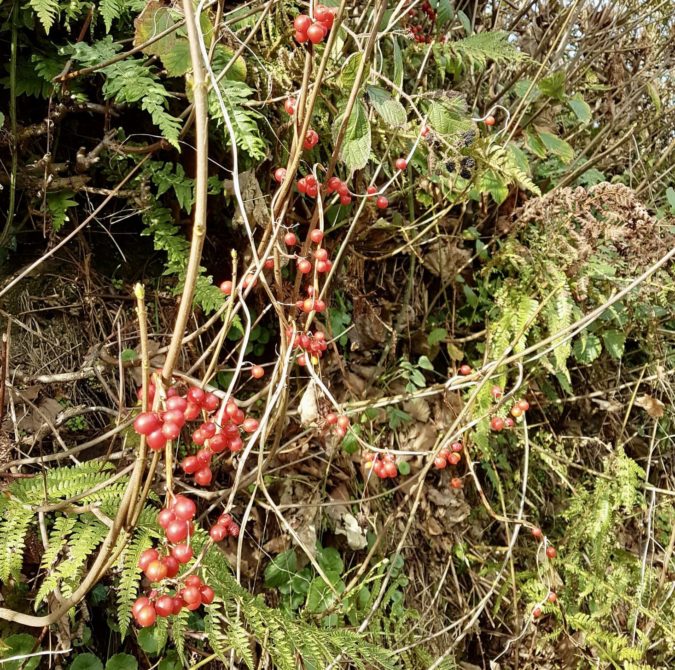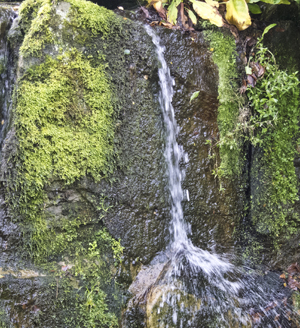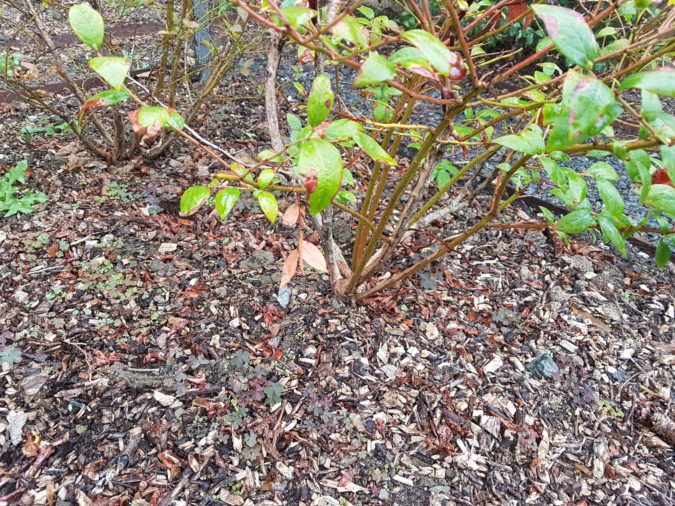Autumnal changes

In 1820, John Keats famous poem “To Autumn’ was published. Its opening line often serves to describe autumn as ‘The season of mists and mellow fruitfulness’. Indeed, Autumn has arrived here. Woodlands have been transformed into a 'tableau' of red, yellows, and oranges as the leaves are shed and the woodland floor has become a veritable fungal jungle, (as Jasper has described). Hawthorn and other bushes are laden with berries, conkers and acorns are generously strewn across woodland floors, squirrels are eating hazelnuts (and hiding them as a winter food store). But this cornucopia of fruits and seeds may be in response to the long, hot and very dry summer we have experienced. Trees and shrubs have been stressed by the heat and drought. Some have responded by mobilising their reserves / efforts into producing more fruits and seeds, to ensure that they pass on their genes to the next generation.
Different trees are responding in other ways. Some are ‘holding on’ to their leaves for longer, whilst others (like some birches and rowans) have already shed theirs - in order to limit the damage from wilting and water loss during the intense heat and drought of summer.

Autumnal colour
Blackberries appeared early this Summer and few are to be seen this Autumn, some animals (like the dormouse) will search in vain.

Black Bryony berries (photo by Art Symons)
Will this Autumn be long and mild? It may extend into the traditional winter months. There is also the threat of extreme weather events (like Storm Arwen that brought severe winds across the UK last November). Whilst we might welcome mild weather (with the high price of gas and electricity), it could be mean an increase in bacterial and fungal infections, not only of plants but also affecting overwintering insects - tucked up in cocoons and pupal cases. Prolonged cold periods, coupled with frosts limit the spread of such infections. The cold of winter is also the traditional signal for animals like hedgehogs to hibernate. If they are still active in winter when food is scarce, then they will lose condition and possibly starve to death. Milder weather in Autumn and Winter also affects the migratory behaviour of birds, some birds may choose to overwinter here. Some seeds need to experience cold temperatures before they will germinate in the following Spring.
Climate change and severe weather events are here to stay until there is a coordinated and concerted effort to reduce greenhouse emissions on a global scale. On a local scale, our gardens (which represent some 400,000 hectares of land) can make a contribution by encouraging wildlife / pollinators and promoting biodiversity. Gardens can also help to some extent with extreme rainfall.  During heavy rain, water runs off hard surfaces and into the drains, these may also deal with sewage. When the drains are overwhelmed by storm water, sewage is discharged into our rivers (and the sea).
During heavy rain, water runs off hard surfaces and into the drains, these may also deal with sewage. When the drains are overwhelmed by storm water, sewage is discharged into our rivers (and the sea).
Gardens can help by
- reducing hard landscaping, so that rain can soak into the soil instead of running off into the drains
- making use of water butts. They capture water, so it does not enter the drainage system. It is also there to use when the garden needs water (and there is a hose pipe ban)
- mulching the soil with a layer of plant material. It is an effective method of conserving water in the soil and it reduces surface runoff, increasing the infiltration / penetration of water into the soil. It helps keep the soil moist in times of drought, and helps reduce run off during heavy rainfall. Particularly important when planting young trees / shrubs.

a light mulch (in Art's garden)
Comments are closed for this post.
